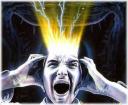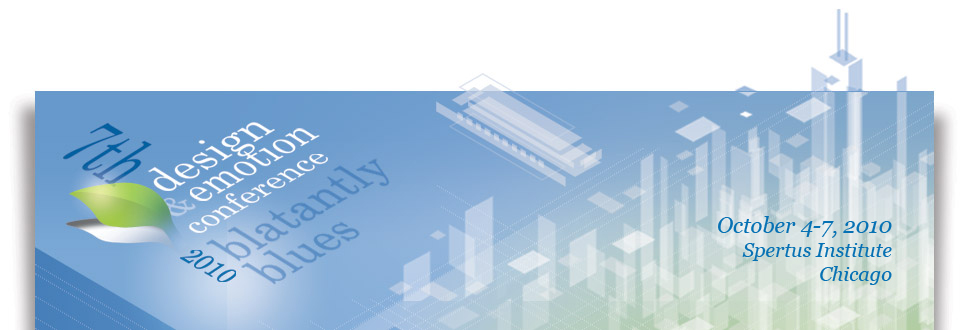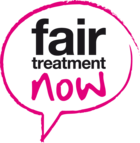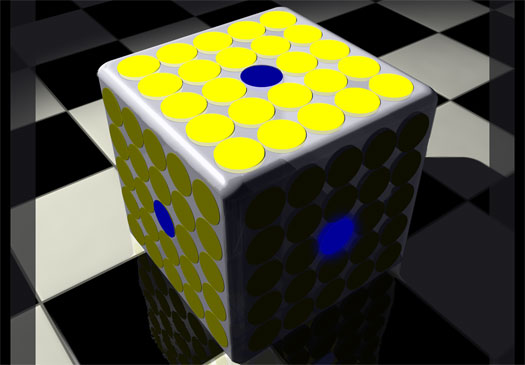September 1st, 2010
 If you are looking to gain experience in the new open source community-based approach to design check out Open Planet Ideas. The goal is to use existing Sony technology to create breakthrough solutions to environmental challenges. To stimulate thinking they offer a technology showcase as a collection of building blocks to construct design ideas.
If you are looking to gain experience in the new open source community-based approach to design check out Open Planet Ideas. The goal is to use existing Sony technology to create breakthrough solutions to environmental challenges. To stimulate thinking they offer a technology showcase as a collection of building blocks to construct design ideas.
This is not a design contest with an open innovation prize but instead an opportunity to work with a community of designers and innovators (including Sony engineers) through inspiration, concepting, evaluation and realization. They are not looking for new product ideas, or ideas on how to make consumer electronics greener. Instead the challenge is to determine how to use existing technologies to achieve sustainability.
A video explains how the process works. They have collected 22 inspirations so far that include views of the most pressing environmental issues as well examples of clever uses of technology. Concepting will start in 29 days.
I strongly encourage readers of this blog to participate. From a cognitive design perspective I am very interested to see how removing the element of competition with a cash prize impacts the outcome.

Posted in Design, Events | No Comments »
August 31st, 2010
 Can you drive a car and talk on your cell phone without reducing you ability to drive safely? Common sense and several actuarial studies say no way. However, a recent study in the Psychonomic Bulletin, Supertaskers: Profiles in extraordinary multitasking ability, claims that 2.5% of us might be able to. To quote the abstract:
Can you drive a car and talk on your cell phone without reducing you ability to drive safely? Common sense and several actuarial studies say no way. However, a recent study in the Psychonomic Bulletin, Supertaskers: Profiles in extraordinary multitasking ability, claims that 2.5% of us might be able to. To quote the abstract:
“We tested 200 participants in a high-fidelity driving simulator in both single- and dual-task conditions. The dual task involved driving while performing a demanding auditory version of the operation span (OSPAN) task. Whereas the vast majority of participants showed significant performance decrements in dual-task conditions (compared with single-task conditions for either driving or OSPAN tasks), 2.5% of the sample showed absolutely no performance decrements with respect to performing single and dual tasks. “
It should be noted that the OSPAN task used has a lower cognitive load than your typical cell phone conversation. Further, the supertaskers also scored in the top quartile when tested on the individual tasks. So they are super single taskers too. No matter, the results are striking. For the cognitive designer that has been following the literature, it demonstrates some form of deep multitasking is possible but it is very rare (3% of the population).

Posted in Psychographics | No Comments »
August 30th, 2010
 Having choice creates cognitive load. Making decisions can take a lot of mental energy. Having many options that are roughly similar or many that are wildly different can lead to choice overload.
Having choice creates cognitive load. Making decisions can take a lot of mental energy. Having many options that are roughly similar or many that are wildly different can lead to choice overload.
As cognitive designers we need to understand how to engineer choice-making and more basically when offering a choice creates value. So I am always on the lookout for new scientific studies that might help us understand when choice is important. An upcoming article in the Journal of Consumer Research, Why Making Our Own Choice is More Satisfying When Pleasure is The Goal, offers some designable insights:
“Results consistently show that the outcome of a self-made choice is more satisfying than the outcome of an externally made choice when the goal is hedonic, but when the goal is utilitarian there is no difference in satisfaction between choosers and non-choosers,” the authors write. “A lack of choice feels less like a deprivation of the capacity to determine one’s own fate when the goal choice is utilitarian than when it is hedonic.”
To over simplify, we get more value from choice when pleasure is involved. Having pleasurable choices gives us the opportunity to savior which offsets the energy required to do the mental work of making the choice.
As is always the case, satisfaction or cognitive performance improves when the mental energy you get out of an interaction is more than you have to put into it.

Posted in Cognitive Bias, Psychographics | No Comments »
August 28th, 2010
 The Journal of Personality and Social Psychology recently published an interesting study, The Desire to Expel Unselfish Members From the Group. It is getting picked up in the blogsphere. For example, PsychCentral writes:
The Journal of Personality and Social Psychology recently published an interesting study, The Desire to Expel Unselfish Members From the Group. It is getting picked up in the blogsphere. For example, PsychCentral writes:
“Four separate studies led by a Washington State University social psychologist have found that unselfish workers who are the first to throw their hat in the ring are also among those that coworkers most want to, in effect, vote off the island.”
Some of the motivations for wanting to expel the unselfish include the complaints that they raise the bar for everyone, make you look bad and break the social rules of the group. The research claims this is true even if the unselfish behavior is good for the group.
I agree with other commentators that this research may have important implications for management and leadership. It has distinct cognitive design implications. But we need to be careful in how we try and apply it. There could be strong psychographic or group profile effects.
It is interesting to note that study participants were introductory psychology students. I am not sure you would find the same behavior in 20-year workplace veterans with considerable career success, a small team intensely focused on a new product launch or many other types of high-performance groups. In such groups stepping up (especially to do unpopular but necessary work) would be appreciated perhaps even respected not fuel for resentment.
What do you think? Are unselfish employees really resented?

Posted in Psychographics | 1 Comment »
August 26th, 2010

This 3-day event promises to overflow with cognitive design ideas, examples and methods. The workshop on Black Box Design that looks at the relationship between magic and design as well as the workshop on Finding Love in Everyday Objects looks especially interesting.
If you get a chance to attend please share your impressions with other readers.

Posted in Events | No Comments »
August 25th, 2010
 To optimize a design for how minds work we must understand how mental energy is converted during interaction. How is the mental effort I put into using something transformed into excitement, pleasure, pride, hope, warm memories, a sense of wonder or an instant insight into myself or the world around me? Any artifact that delivers smoothly on its core functionality and generates mental energy by moving my heart-and-mind will be a winner in the marketplace or workplace.
To optimize a design for how minds work we must understand how mental energy is converted during interaction. How is the mental effort I put into using something transformed into excitement, pleasure, pride, hope, warm memories, a sense of wonder or an instant insight into myself or the world around me? Any artifact that delivers smoothly on its core functionality and generates mental energy by moving my heart-and-mind will be a winner in the marketplace or workplace.
Learning to see the mental energy signature of an artifact is a core skill for the cognitive designer.
 Laughter is one place to look. We laugh because something tickles the novelty center in our brain by catching us by surprise. A momentary instance of cognitive dissonance between the set-up and punch line creates a spike of mental energy we cannot contain so we laugh. We also laugh and try and make others laugh to relieve situational stress, worry or anxiety. This is often the source of the inappropriate jokes or laughing at the wrong time. The cognition is the same – a spike of mental energy, too much to handle, looking to go to ground.
Laughter is one place to look. We laugh because something tickles the novelty center in our brain by catching us by surprise. A momentary instance of cognitive dissonance between the set-up and punch line creates a spike of mental energy we cannot contain so we laugh. We also laugh and try and make others laugh to relieve situational stress, worry or anxiety. This is often the source of the inappropriate jokes or laughing at the wrong time. The cognition is the same – a spike of mental energy, too much to handle, looking to go to ground.
 So I am always on the look out for new scientific studies into the nature of laughter. For example, a recent study conducted by North Carolina State took a unique empirical look at the role of laughter during jury deliberation. The news release, aptly titled No Laughing Matter, provides some potential insights into group dynamics. For instance:
So I am always on the look out for new scientific studies into the nature of laughter. For example, a recent study conducted by North Carolina State took a unique empirical look at the role of laughter during jury deliberation. The news release, aptly titled No Laughing Matter, provides some potential insights into group dynamics. For instance:
“The researchers learned that laughter could be used as a tool, intentionally and strategically, to control communication and affect group dynamics. For example, one juror was very vocal and made it clear early in the case that she was opposed to the death penalty. In one instance, when that juror agreed with other jury members, one of the other members said “She’s so smart,” resulting in laughter from other members of the group. “That had the effect of further distancing her from the rest of the jury,” Keyton says.”
The article goes on to point out there is little research into the nature of laughter in serious settings. Fortunately, cognitive designers are well positioned to offer field observations. When have you seen laughter in a serious setting and what did it reveal about the mental energy dynamics of the situation?

Posted in Psychographics | 4 Comments »
August 21st, 2010

Just organizations treat employees fairly. Generating feelings and thoughts of fairness in employees requires making decisions and taking actions that produce favorable outcomes and/or use processes that involve employees, create a level playing field and provide clear explanations of why. To maintain a sense of fairness when everyone cannot receive a favorable outcome means using processes that are inclusive, consistent and clear. Up to a point, high process fairness is very important for maintaining organizational justice at crunch time or when outcomes are very unfavorable – layoffs, budget cuts and work-life imbalances.
Crunch time in organizational justice presents many cognitive design challenges. Such situations carry a strong emotional charge (guilt, sympathy, fear) and can have subtle cognitive side effects. For example, you can accidentally and negatively impact employee self esteem or create survival guilt with high process fairness.

Further, bad news carries tremendous cognitive load. One that authorities delivering the news might not be able to handle well enough to maintain high process fairness. There are several other cognitive factors inhibiting manager from following high process fairness including lack of belief that they will do much good and a natural reluctance to surrender power. These issues are covered well in the new book Contemporary Look at Organizational Justice: Multiply Insult Times Injury. It is a bit academic but the free chapter is on practical applications.
When outcomes are bad our brains go into overdrive on many levels. Not attending to the cognitive factors at crunch time strongly diminishes our ability to treat employees fairly and maintain a sense of organizational justice. This is especially the case if we design high-fairness processes that fail to account for how the mind of the managers naturally works. They won’t get implemented.
The case for this is made fairly strongly in the book. Indeed, the author calls it the Paradox of Process Fairness. It is a paradox because the business case for process fairness during crunch time is good yet the evidence suggests we don’t use it. We don’t use it because we have failed to design high fairness processes that meet the cognitive needs of managers. We create the conditions of fairness for employees – involvement, level playing field, clarity of explanation but leave managers with a sometime unbearable cognitive load, no response to their belief that it does not work, naive demand to share power and the like.
The challenge for cognitive designers working in the field of organizational justice is to create high process fairness that meets the psychological needs of both employees and managers.

Posted in Books, Psychographics, Service Innovation, Uncategorized | No Comments »
August 18th, 2010

Believe it or not, the blue dot on the top of the cube and the one on the shaded side to the right are exactly the same. I borrowed this image from Wrong By Design. There are other examples that are fun to check out.
The image illustrates an important concept in cognitive design namely:
when designing for how minds work there is nearly always at least one powerful cognitive bias at work. You need to uncover it and decide to mitigate, leverage or ignore it.
Perception, memory, learning, decision-making, problem solving, creativity and all other mental processes are loaded with limitations, quirks and biases that must be understood if we are claiming our designs are optimized for how minds work.
Magic, music you cannot forget, lottery tickets, movies that make us cry and viral videos all leverage well-known cognitive biases. Cognitive biases left unchecked lead to poor decision-making, the high failure rate of planned change and safety issues. We now have catalogs of dozens of known biases. Our first step as cognitive designers is to make them as visible as the blue dot in the cube.

Posted in Cognitive Bias | No Comments »
August 16th, 2010
 IDEO has recently started a site, OpenIDEO, to apply crowdsourcing to social innovation. This is your chance to participate in all phases of the innovation process (inspiration, concepting, evaluation and development) for a big question that is posed by a sponsor. There are two big questions currently in the hopper:
IDEO has recently started a site, OpenIDEO, to apply crowdsourcing to social innovation. This is your chance to participate in all phases of the innovation process (inspiration, concepting, evaluation and development) for a big question that is posed by a sponsor. There are two big questions currently in the hopper:
1. How might we increase the availability of affordable learning tools & services for students in the developing world?
2. How can we raise kids’ awareness of the benefits of fresh food so they can make better choices?
Both are excellent challenges for cognitive designers.

Posted in Design, Events | No Comments »
August 15th, 2010
Systems that remotely monitor the movements, weight, blood pressure, compliance with medication schedules and other daily behaviors of older adults are springing up. For children with older parents experiencing failing health such systems mean high-tech eldercare from afar. For the parents it means a chance to age in place.
Take for example, the BeClose system.

Add some smart software into the mix as they do in the QuietCare system and you can infer a lot about what is going on:
“Have they gotten out of bed in the morning?
Have they navigated the bathroom safely?
Have they eaten?
Have they taken their medicine?
What’s their overall activity level?
Are they sleeping well?”
But technology is only part of the story. Successful deployment and use requires close attention to human factors and good cognitive design. A recent article in the New York Times brings this to a sharp point:
“Many of the systems are godsends for families. But, as with any parent-child relationship, all loving intentions can be tempered by issues of control, role-reversal, guilt and a little deception — enough loaded stuff to fill a psychology syllabus. For just as the current population of adults in their 30s and 40s have built a reputation for being a generation of hyper-involved, hovering parents to their own children, they now have the tools to micro-manage their aging mothers and fathers as well.”
The article makes the point that remote monitoring eldercare systems are meeting cognitive needs on both sides of the fence:
In addition to giving him peace of mind that his mother is fine, the system helps assuage that midlife sense of guilt. “I have a large amount of guilt,” Mr. Murdock admitted. “I’m really far away. I’m not helping to take care of her, to mow her lawn, to be a good son.”
The article does a good job of raising some of the key cognitive design issues but it is far from clear how they can be resolved.

Posted in Examples, Service Innovation | No Comments »
 If you are looking to gain experience in the new open source community-based approach to design check out Open Planet Ideas. The goal is to use existing Sony technology to create breakthrough solutions to environmental challenges. To stimulate thinking they offer a technology showcase as a collection of building blocks to construct design ideas.
If you are looking to gain experience in the new open source community-based approach to design check out Open Planet Ideas. The goal is to use existing Sony technology to create breakthrough solutions to environmental challenges. To stimulate thinking they offer a technology showcase as a collection of building blocks to construct design ideas.










